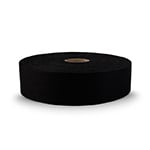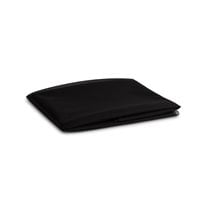Fusible Interfacing Fabric for Garments
- 1" x 50 yds. (1)
- 1" x 100 yds. (1)
- 2" x 50 yds. (2)
- 2" x 100 yds. (5)
- 2 1/2" x 100 yds. (2)
- 3" x 50 yds. (2)
- 3" x 100 yds. (4)
- 15" x 2 yds. (2)
- 15" x 3 yds. (1)
- 15" x 10 yds. (1)
- 17" x 1 1/4 yds. (1)
- 17" x 2 yds. (2)
- 17" x 5 yds. (3)
- 17" x 10 yds. (2)
- 17" x 35 yds. (1)
- 20" x 1 yd. (3)
- 20" x 2 1/2 yds. (5)
- 20" x 5 yds. (9)
- 20" x 10 yds. (4)
- 20" x 11 yds. (1)
- 20" x 25 yds. (8)
- 20" x 30 yds. (1)
- 20" x 40 yds. (1)
- 20" x 48 yds. (1)
- 22" x 1 yd. (1)
- 22" x 5 yds. (1)
- 22" x 25 yds. (1)
- 36" x 58" (1)
- 36" x 5 yds. (1)
- 36" x 16 1/2 yds. (2)
- 44" x 2 yds. (2)
- 44" x 5 yds. (2)
- 44" x 10 yds. (2)
- 44" x 25 yds. (1)
- 45" x 60" (1)
- 45" x 5 yds. (1)
- 45" x 20 yds. (1)
- 46" x 5 yds. (1)
- 47" x 5 yds. (1)
- 60" x 1 yd. (1)
- 60" x 5 yds. (4)
- 60" x 10 yds. (1)
- 60" x 25 yds. (1)
No-Sew Fusible Interfacing For Garments.Add body, shape, and stiffness to your garment creations with Fusible Interfacing from WAWAK Sewing Supplies. These easy-to-apply interfacing fabrics are ideal for strengthening and reinforcing garment areas like collars, pockets, shoulders, elbows, and more. Use interfacing to add structure to thin materials, create shape or rigidity, prevent stretch, reinforce areas that encounter a lot of wear and stress, or provide backing support for things like embroidery and buttons. Fusible Interfacings have a heat-activated adhesive on one side, so they can be easily applied by ironing—no sewing required! From blouses to suit jackets and everything in between, we have the right interfacing for your garment project. For small garment areas like collars or hems, we also offer interfacing in narrow rolls to help save time on cutting. Choose from a variety of weights and styles to find the interfacing fabric with exactly the weight and feel your project needs for the perfect professional finish. |
Frequently Asked Questions About Fusible Interfacing
What is fusible interfacing used for in garments?In garment sewing, fusible interfacing is used to reinforce garment areas that require more strength, stability, or structure. It's applied to the wrong side of the fabric and helps prevent the material from stretching or tearing while adding a more crisp, structured appearance. You'll often see fusible interfacing used on items like collars, cuffs, waistbands, pockets, or buttonholes.
How do you attach fusible interfacing to fabric?Fusible interfacing can be easily adhered to a fabric with an iron. Simply place the interfacing adhesive-side down onto the wrong side of your chosen fabric and press the interfacing using an iron and pressing cloth. Refer to the package directions of your product for specific time and temperature settings and other helpful tips. Allow the interfacing and fabric to cool completely before handling.
What are the advantages to having a narrow roll of fusible interfacing?Fusible interfacing narrow rolls are the perfect width for small garment areas like collars, cuffs, hems, buttonholes, or waistbands, and can help save time on cutting interfacing for these and other common applications. |



























